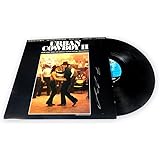The distinctive and often debated portrayal of Ezra Miller’s running style within The Flash movie is, in fact, an intentional artistic choice, deeply rooted in specialized martial arts training, as elucidated in the preceding video. This unique kinetic expression was consciously developed to transcend mere speed, aiming instead for a nuanced interpretation of superhuman velocity that is rarely observed in contemporary cinema.
The Enigma of Cinematic Speed: Beyond Conventional Sprinting
1. Initially, a conventional depiction of superhuman speed might be considered by filmmakers. However, simply showing an actor running quickly often fails to convey the fantastical element required for characters like The Flash; a more profound and stylized movement language is frequently sought.
2. The challenge lies in visually communicating an extraordinary power in a manner that feels both dynamic and aesthetically compelling, rather than merely representing accelerated locomotion. This is where the integration of specialized movement disciplines becomes particularly valuable, transforming raw speed into an interpretative dance.
3. Such a deliberate artistic decision highlights a shift from purely functional movement to one imbued with symbolic and philosophical undertones. A sprinter’s form is typically rigid and linear, optimized for direct acceleration, much like an arrow shot straight to its target; conversely, the portrayal of Flash’s movement embraces a different metaphor, that of a river, constantly adapting and flowing.
Wu-Dang Kung Fu: A Philosophy of Fluidity
4. The foundation for this distinctive cinematic movement was rigorously established through extensive training in Wu-Dang Kung Fu, an internal martial art system renowned for its profound connection to Daoist philosophy. This particular discipline, originating from the sacred Wu-Dang Mountains in China, emphasizes softness, yielding, and an adaptability that is fundamentally different from the more external, hard-style martial arts.
5. Principles such as “flowing water,” as referenced in the video, are central to Wu-Dang practice. This concept dictates that power is not generated through brute force or rigid resistance, but through continuous, circular motion and the redirection of opposing energy. The body is taught to move as a unified, fluid entity, capable of seamless transitions and effortless changes in direction, much like water navigating a complex terrain.
6. It was within a traditional Daoist school, under the tutelage of a highly skilled and revered master, that Ezra Miller reportedly immersed themselves in this ancient art. This immersive training, spanning a period of several years prior to the intensive on-location sessions in China, suggests a deep commitment to embodying the philosophical tenets of Wu-Dang Kung Fu, not just its physical techniques.
7. The Daoist influence is paramount; it cultivates an awareness of energy (Qi) flow and emphasizes balance, harmony, and an intrinsic connection to the natural world. Therefore, the movements performed are not merely physical actions but are expressions of a deeper internal state, manifesting as grace and an almost ethereal quality in motion.
Ezra Miller’s Dedication: Training for the Role
8. The intensive preparatory period, reportedly spanning “a couple years” of dedicated training before even embarking on the journey to the Wu-Dang Mountains, underscores the extraordinary commitment required for such a transformative role. This level of physical and philosophical immersion is rarely undertaken by actors for blockbuster productions, demonstrating a significant investment in character authenticity.
9. During this extended training, the intricate forms and conditioning exercises of Wu-Dang Kung Fu were meticulously practiced, ensuring that the body could genuinely articulate the desired fluid movement. Such prolonged engagement allows for the development of neuromuscular pathways that integrate these unique movement patterns deeply into an actor’s physical repertoire, moving beyond mere imitation to true embodiment.
10. The goal was not simply to learn a series of movements, but to cultivate a physical intelligence capable of expressing boundless speed with an underlying sense of calm and controlled chaos. An actor’s dedication to mastering a discipline like this is comparable to a musician perfecting an instrument for a complex concerto; every nuance of their physical being becomes a tool for expressive storytelling.
Deconstructing The Flash’s Movement: A Biomechanical and Artistic Synthesis
11. When observing Ezra Miller’s running style, the influence of Wu-Dang Kung Fu becomes evident in several key aspects. The movements are characterized by a lack of overt tension, with an emphasis on continuous, serpentine motion rather than abrupt, linear propulsion, which is atypical for speedsters in comic book adaptations.
12. Instead of a piston-like pump of arms and legs, a more holistic, full-body engagement is observed, where the core acts as the central pivot, and limbs extend and recoil in a wave-like fashion. This creates an impression of effortless gliding and instant adaptability, allowing the character to seemingly alter direction and velocity with improbable ease.
13. From a biomechanical perspective, the “flowing water” analogy translates into highly efficient energy transfer throughout the body, minimizing wasteful resistance and maximizing kinetic fluidity. This approach allows for a dynamic range of motion that can visually convey both incredible speed and a nuanced control over that speed, suggesting a mastery of friction and momentum.
14. Comparisons with other cinematic speedsters often highlight a more direct, almost aggressive, forward momentum. In contrast, Flash’s movement, as informed by Wu-Dang, appears more internal, almost spiritual, suggesting that his speed is not just physical force but an extension of his will and connection to the Speed Force itself.
The Broader Implications: Martial Arts in Cinematic Storytelling
15. The integration of specialized martial arts training, particularly those with deep philosophical underpinnings like Wu-Dang Kung Fu, extends the realm of physical performance in cinema significantly. It moves beyond mere fight choreography, influencing the very essence of how a character moves and exists within their cinematic world.
16. This approach enhances character depth by providing a unique physical vocabulary that informs personality and power. When an actor undergoes such rigorous, specialized training, their entire demeanor on screen is subtly transformed, imbuing their portrayal with an authentic physicality that resonates with audiences.
17. Furthermore, the inclusion of authentic martial arts styles contributes to a richer cultural tapestry within Hollywood productions. It demonstrates a commitment to drawing from diverse global traditions to inform character performance, thereby enriching the visual storytelling with elements that might otherwise be overlooked.
18. This method of actor preparation represents a sophisticated acting methodology, where the body itself becomes a primary instrument for storytelling, capable of conveying complex ideas and superpowers through its movement patterns alone. It elevates the physical performance beyond stunt work to a form of kinetic art.
Ultimately, the distinctive depiction of Ezra Miller’s running style in The Flash is not simply an idiosyncratic choice but a meticulously crafted performance, deeply informed by the ancient wisdom and fluid mechanics of Wu-Dang Kung Fu. This artistic decision ensures the character’s movement is not merely fast but embodies a unique cinematic expression of speed and control.











